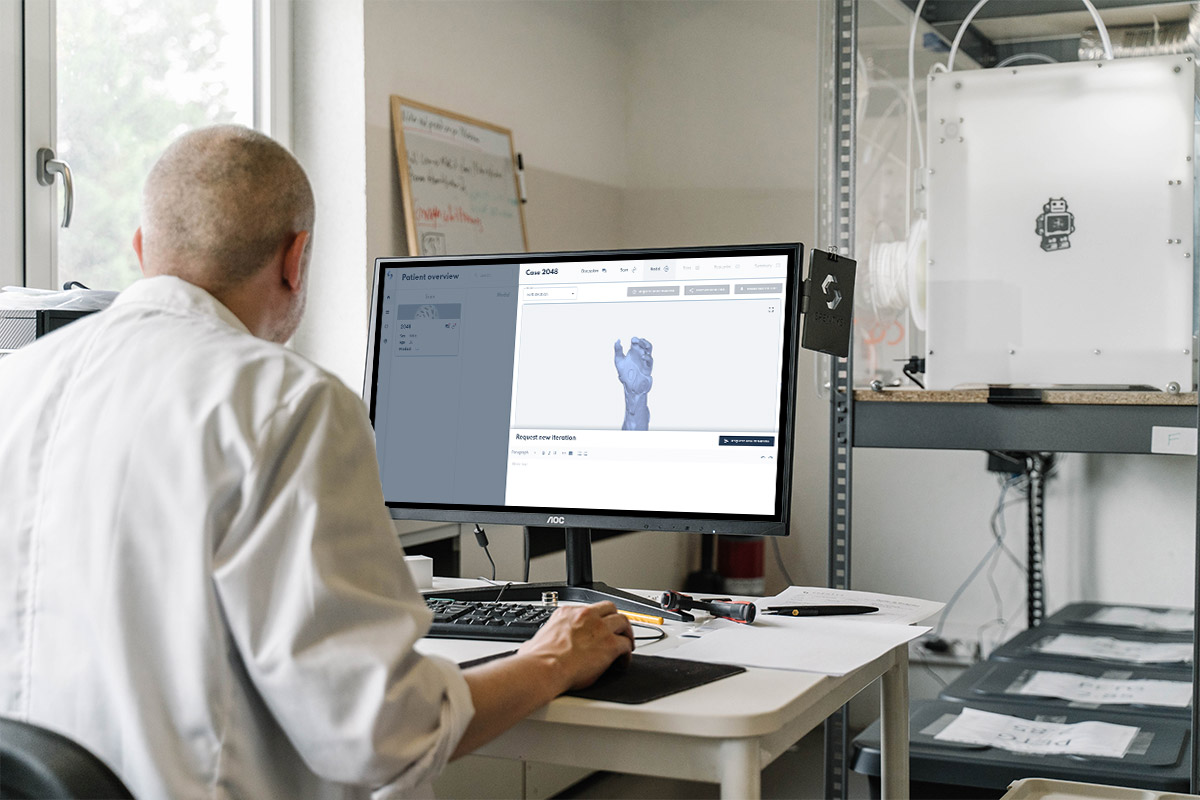How to make your work environment COVID-19 proof
Public health authorities worldwide are taking action to contain the COVID-19 outbreak. Businesses and employers cannot take these actions for granted; as a society, we have a shared responsibility to prevent and slow the spread of COVID-19. Individual discipline and collective discipline are vital for the success of our joint efforts. Businesses and employers must take a leading role to stop the spread of this disease.

3D printing companies around the world have abandoned their “business as usual”, pivoting their operations to help restock hospitals with the right medical equipment to protect doctors and other hospital staff from the highly contagious virus. We, at Spentys, decided to make our machines, our modelling skills, and our team available for all urgent production requests from hospitals to support the fight against COVID-19. Last week we started sending out the first personal protective equipment (PPE) that is already being used by doctors at intensive care across the country.
It’s time to take our efforts a step further. We want to help independent healthcare workers (physiotherapists, orthopaedic technologist, etc.) to start treating their patients again while ensuring a safe (COVID-19 free) work environment. That’s why we launched the #GetBackToWorkSafe campaign and put together a short list of precautions you can take when getting back to work. Keep informed at all times and follow the guidelines of your local government. It is advised to treat only the patients with urgent health-related complaints.
In short, there are three steps to #GetBackToWorkSafe:
- Make sure your workplace is clean and hygienic. Wipe (frequently touched) objects and surfaces with disinfectant on a regular basis. You can use Alcohol solutions (>70%) or even your household bleach.
- Wash your hands using soap or hand sanitiser (>60% alcohol) and avoid touching your eyes, nose, and mouth. If you have developed mild symptoms of the virus, you are advised to stay home.
- When handling patients or materials that are intended to be used by other people, it’s advised to take extra precautions. Use the appropriate PPE (latex gloves, a facemask and a face shield).
Try to minimise the possibility of infection between patients by scheduling long breaks and by frequently cleaning the workspace in between appointments.

How COVID-19 Spreads
Based on what is currently known about COVID-19 and other similar coronaviruses, the spread of the virus is thought to occur mostly between humans via respiratory droplets among close contacts (hence the social distancing rule being introduced in almost every country of the world). When you are in less than 2 meters of a patient, you are considered in close ranch If the patient is infected with COVID-19, you put yourself at risk by staying in close contact for a prolonged period of time. Contact with infectious secretions (sputum, serum, blood, and respiratory droplets) can increase the risk of infection. If social distancing cannot be guaranteed, the use of proper PPE by healthcare personnel is highly advised.
How You Can Protect Yourself
Healthcare personnel should follow the guidelines from the WHO. Use appropriate PPE! Research what type of PPE is recommended in your specific situation. Practice how to correctly put on and take off the equipment to prevent self-infection. Furthermore, only treat patients who urgently need help. It is advised to prioritise patients with serious complaints and reschedule less urgent interventions.
You can discover all the personal protection equipment that we started producing and offer here.
Together we will help stop the spread of COVID-19.


How to make your work environment COVID-19 proof

Public health authorities worldwide are taking action to contain the COVID-19 outbreak. Businesses and employers cannot take these actions for granted; as a society, we have a shared responsibility to prevent and slow the spread of COVID-19. Individual discipline and collective discipline are vital for the success of our joint efforts. Businesses and employers must take a leading role to stop the spread of this disease.

3D printing companies around the world have abandoned their “business as usual”, pivoting their operations to help restock hospitals with the right medical equipment to protect doctors and other hospital staff from the highly contagious virus. We, at Spentys, decided to make our machines, our modelling skills, and our team available for all urgent production requests from hospitals to support the fight against COVID-19. Last week we started sending out the first personal protective equipment (PPE) that is already being used by doctors at intensive care across the country.
It’s time to take our efforts a step further. We want to help independent healthcare workers (physiotherapists, orthopaedic technologist, etc.) to start treating their patients again while ensuring a safe (COVID-19 free) work environment. That’s why we launched the #GetBackToWorkSafe campaign and put together a short list of precautions you can take when getting back to work. Keep informed at all times and follow the guidelines of your local government. It is advised to treat only the patients with urgent health-related complaints.
In short, there are three steps to #GetBackToWorkSafe:
- Make sure your workplace is clean and hygienic. Wipe (frequently touched) objects and surfaces with disinfectant on a regular basis. You can use Alcohol solutions (>70%) or even your household bleach.
- Wash your hands using soap or hand sanitiser (>60% alcohol) and avoid touching your eyes, nose, and mouth. If you have developed mild symptoms of the virus, you are advised to stay home.
- When handling patients or materials that are intended to be used by other people, it’s advised to take extra precautions. Use the appropriate PPE (latex gloves, a facemask and a face shield).
Try to minimise the possibility of infection between patients by scheduling long breaks and by frequently cleaning the workspace in between appointments.

How COVID-19 Spreads
Based on what is currently known about COVID-19 and other similar coronaviruses, the spread of the virus is thought to occur mostly between humans via respiratory droplets among close contacts (hence the social distancing rule being introduced in almost every country of the world). When you are in less than 2 meters of a patient, you are considered in close ranch If the patient is infected with COVID-19, you put yourself at risk by staying in close contact for a prolonged period of time. Contact with infectious secretions (sputum, serum, blood, and respiratory droplets) can increase the risk of infection. If social distancing cannot be guaranteed, the use of proper PPE by healthcare personnel is highly advised.
How You Can Protect Yourself
Healthcare personnel should follow the guidelines from the WHO. Use appropriate PPE! Research what type of PPE is recommended in your specific situation. Practice how to correctly put on and take off the equipment to prevent self-infection. Furthermore, only treat patients who urgently need help. It is advised to prioritise patients with serious complaints and reschedule less urgent interventions.
You can discover all the personal protection equipment that we started producing and offer here.
Together we will help stop the spread of COVID-19.







_11zon.jpg)

